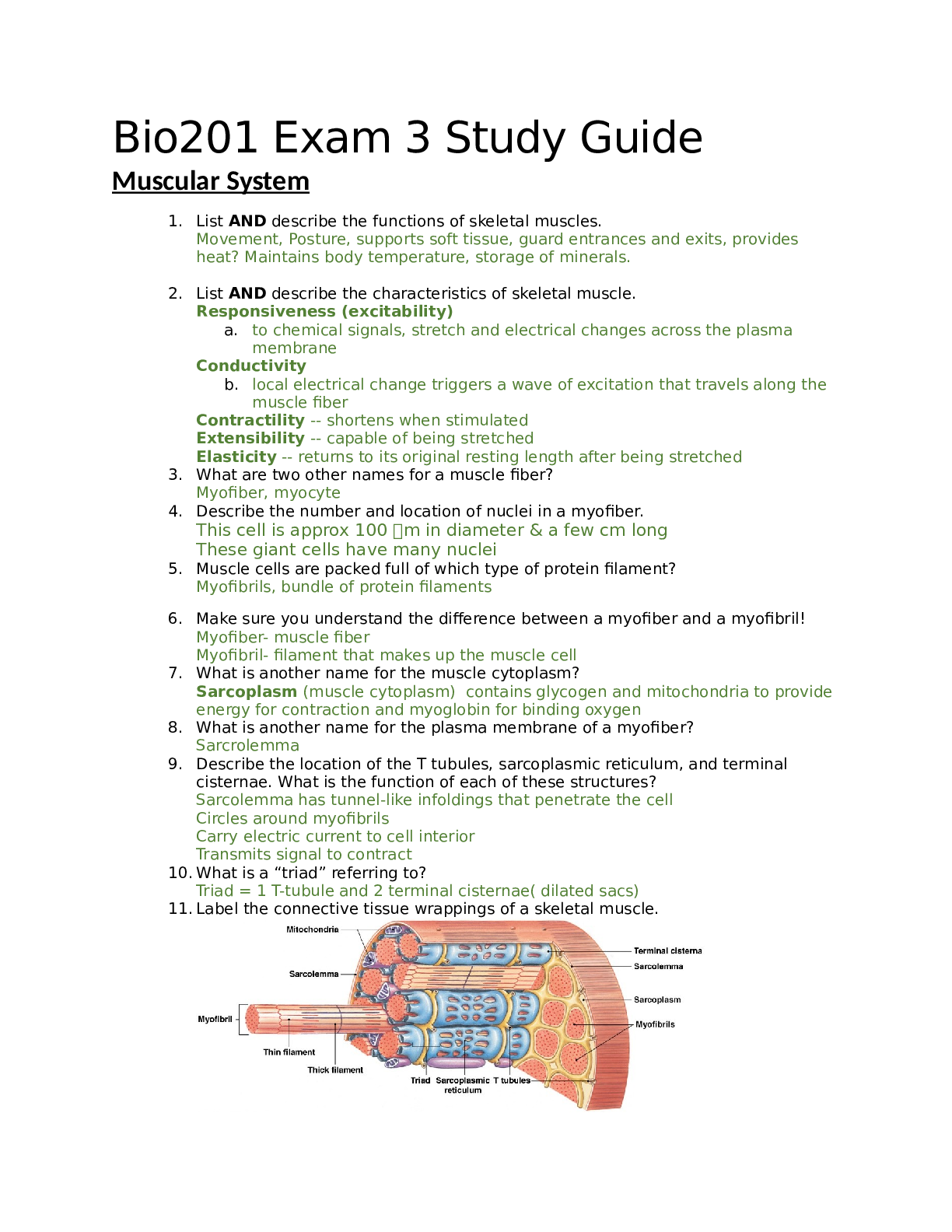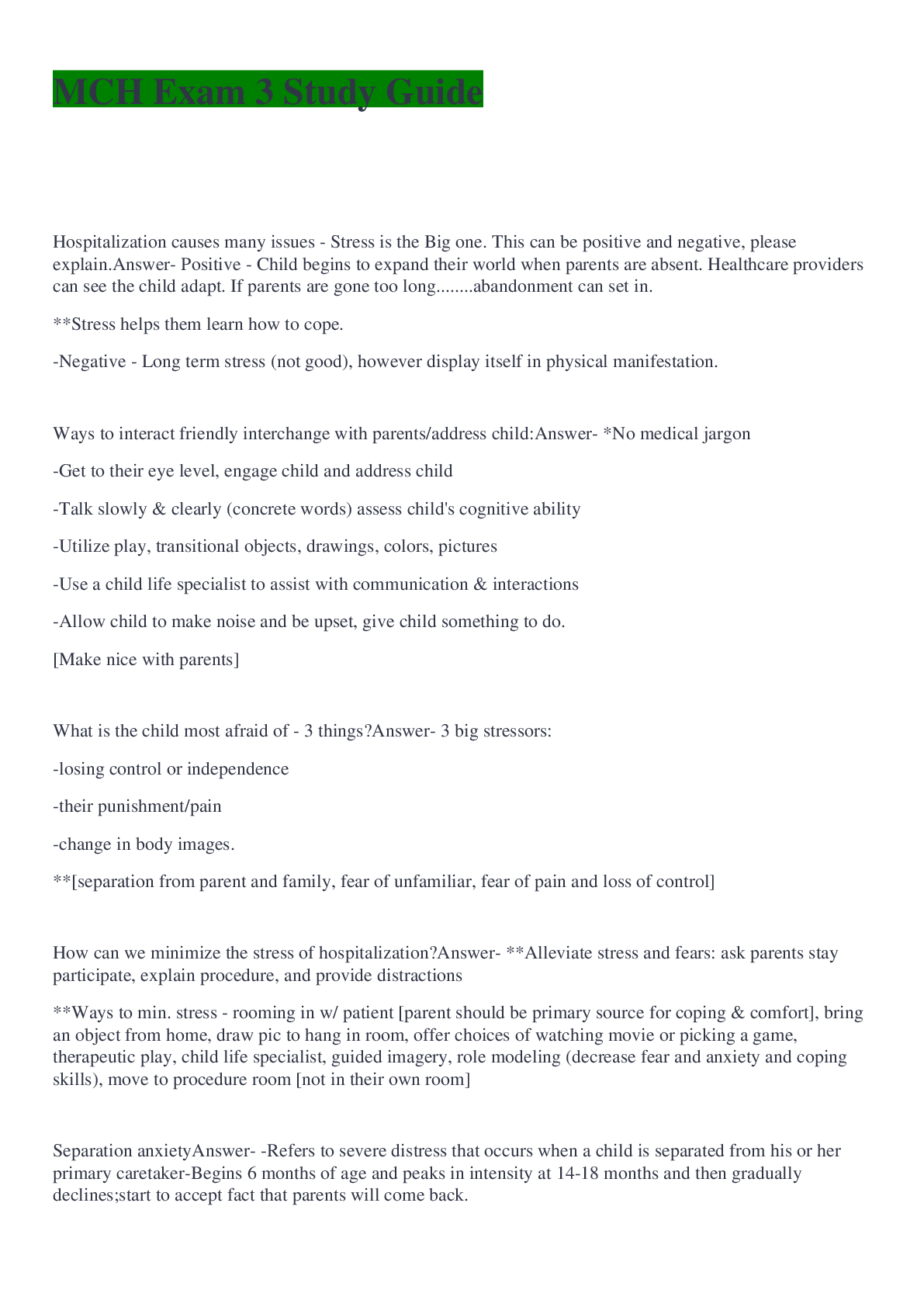*NURSING > STUDY GUIDE > NURS 1172 Nutritional Principles Exam 3 study guide - Rasmussen College / NURS 1172 Nutritional Prin (All)
NURS 1172 Nutritional Principles Exam 3 study guide - Rasmussen College / NURS 1172 Nutritional Principles Exam 3 study guide
Document Content and Description Below
NURS 1172 Nutritional Principles Exam 3 study guide - Rasmussen College Module 6 Chapter 18: Drug –Nutrient Interactions ϖ Review the FDA pamphlets provided in the announcements. ϖ Older ad... ults at risk o Older adults make up 14% of the current population o By the year 2050, it will be 20% to 22% o Older adults take more prescription and nonprescription medications than younger adults o Likely to be taking drugs for long periods of time for chronic disease o Drugs are likely to be more toxic o Respond to drugs with greater variability o Handle drugs less efficiently o Nutritional status is more likely to be deficient o Increased errors in self-care due to mental confusion, illness, and lack of drug information o Stimulated or suppressed appetite o Decreased intestinal absorption o Increased renal secretion o Competition or displacement of nutrients for protein carrier sites ϖ Education regarding food allergies • Emergency treatment for severe allergic response o Epinephrine is the only medication that can reverse the symptoms of anaphylaxis. • Staying safe o Strict avoidance of problem foods o Working with your doctor to develop a Food Allergy & Anaphylaxis Emergency Care Plan o Wearing emergency medical identification (e.g., bracelet, other jewelry) at all times o Carrying your medication wherever you go o Taking your medication at the first sign of a reaction o Getting to an emergency room for follow-up treatment if you have a severe reaction o Resources especially for nurses commonly used in the clinical setting: ¬ Davis's Drug Guide for Nurses ¬ Lippincott's Nursing Drug Guide ¬ Nurses Pocket Drug Guide • Accidental ingestion o When people have food allergies, they must be prepared to treat an unintentional exposure. For example, these include: ¬ Wearing a medical alert bracelet or necklace ¬ Carrying an auto-injector device containing epinephrine (adrenaline) ¬ Seeking medical help immediately • Avoiding o Alcohol can potentiate the effects of some medications while decreasing the effects of others; it can also cause bleeding in the intestinal tract when taken with specific medications o Medications that help the body retain potassium should not be taken with potassium rich foods such as white beans or bananas. o Foods high in fiber can decrease the effects of some medications as well; those medications should be taken on an empty stomach. o Grapefruit juice can increase the effectiveness of the "statin" drugs used for cholesterol therefore increasing the chances for side effects as well. ϖ Assessing for food allergies • Skin--itching, hives, redness, swelling • Nose--sneezing, stuffy nose, runny nose • Mouth--itching, swelling of lips or tongue • Throat--itching, tightness, difficulty swallowing, hoarseness • Chest--shortness of breath, cough, wheeze, chest pain, tightness • Heart--weak pulse, passing out, shock • Gastrointestinal (GI) tract--vomiting, diarrhea, cramps • Nervous system--dizziness or fainting • Anaphylaxis ϖ Define Food allergy • Food allergies are adverse reactions to foods or food components triggered by the body's immune system. ϖ Define Food intolerance: negative reactions to food or food componets, not triggered by the body's immune system • Lactose intolerance • Gluten intolerance • Sensitivities to food additives such as MSG • Sulfites added to increase crispness or prevent mold growth. ϖ Effects of food on Drug Absorption (p. 412) • Increased drug absorption 1. Nutrients Dissolving characteristics: When a drug does not dissolve rapidly after it has been taken, the time it remains in the stomach with food is prolonged. This increased time in the stomach may increase its - - - - - - - - - - -Never drink if pregnant or trying to become pregnant. • Above all, use common sense. ϖ Insulin therapy (p. 514) Types 1. rapid-acting insulins: 1/2 hour-5 hours 2. intermediate acting insulins: 2-29 hours 3. long-lasting insulins: works slowly over 24 hours Bolus requirement short acting 1 unit of insulin covers 15g carbs ϖ Testing methods for monitoring results of treatment (oral and insulin) p. 516 1. Self-monitoring of blood glucose (test kits for use at home) 2. Glycated hemoglobin test (HbA1c): most common lab test to monitor blood glucose levels Chapter 23 – Renal disease ϖ End stage renal failure • Most Common causes 1. Diabetic nephropathy 2. Hypertension • Nutritional objectives for dialysis patients 1. Maintain energy and electrolyte balance 2. Prevent dehydration and fluid overload 3. Monitor sodium and potassium intake 4. Increase carbohydrate consumption to protect proteins ϖ Chronic kidney disease: the progressive, irreversible losses of excretory, endocrine, and metabolic capacities of the kidney • Medical nutrition therapy (MNT) 1. Protein intake: 0.60g/kg to 0.75g/kg 2. Calories: 35kcal/kg IBW for less than 60 years old and 30-35kcal/kg IBW for greater than 60 years 3. Sodium 1-3 g daily 4. Potassium unrestricted 5. Phosphorous 800-1000mg per day 6. Calcium 1-1.5g/day 7. No fluid restriction 8. DRI for vitamins B and C 9. Individualize vitamin D, iron and zinc • Nutrition o Lower sodium, keep potassium, adequate protein, keep hydrated and balance fluids • Sodium o Fluid retention/edema may occur o As kidney function declines, the ability of the nephrons to maintain sodium balance through sodium excretion diminishes. o However, an adaptive mechanism results in undamaged nephrons being able to excrete an increased percentage of filtered sodium, with the effect being a decrease in the fractional reabsorption and an increase in fractional excretion of sodium by renal tubules. ϖ Acute Renal Failure • Causes 1. Patients are in negative nitrogen balance and generate much more urea from catabolic processes 2. There is a metabolic insult or traumatic injury 3. Toxins 4. Dehydration 5. Condition is reversible • Oliguria: low urine output ϖ Kidney stone • Most common type: calcium • Treatment (p. 545) 1. Increase fluid intake 2. Control urinary pH levels 3. Adjust diet to prevent the composition of stones 4. Binding agents 5. Alternative remedies 6. I.V fluids to flush stone 7. Surgery ϖ Urinary tract infections • Prevention 1. Increase water intake 2. Drink cranberry juice 3 decrease caffeine intakes 4. Use probiotics 5. Urination after sexual intercourse [Show More]
Last updated: 1 year ago
Preview 1 out of 20 pages
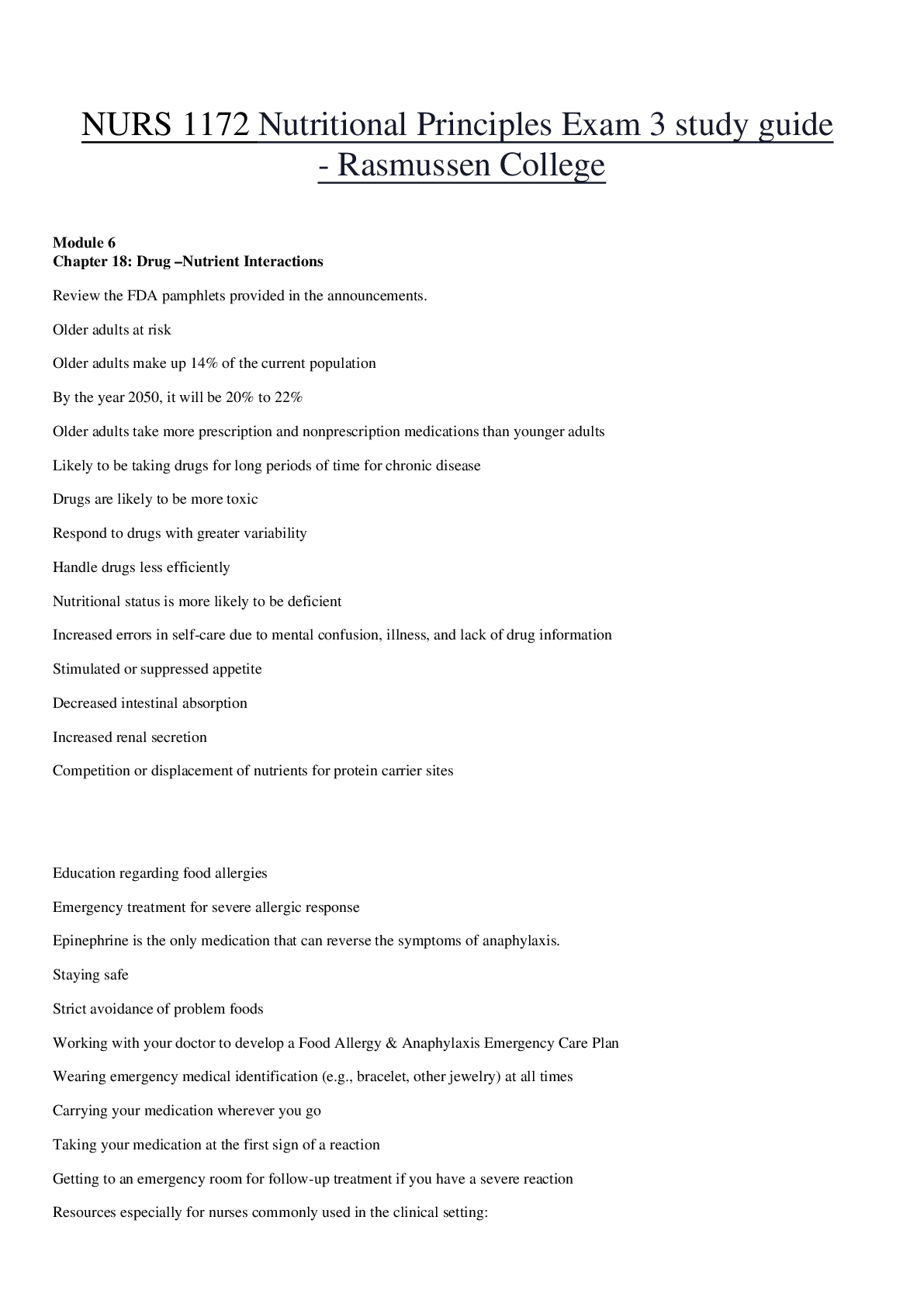
Reviews( 0 )
Document information
Connected school, study & course
About the document
Uploaded On
May 30, 2020
Number of pages
20
Written in
Additional information
This document has been written for:
Uploaded
May 30, 2020
Downloads
0
Views
40

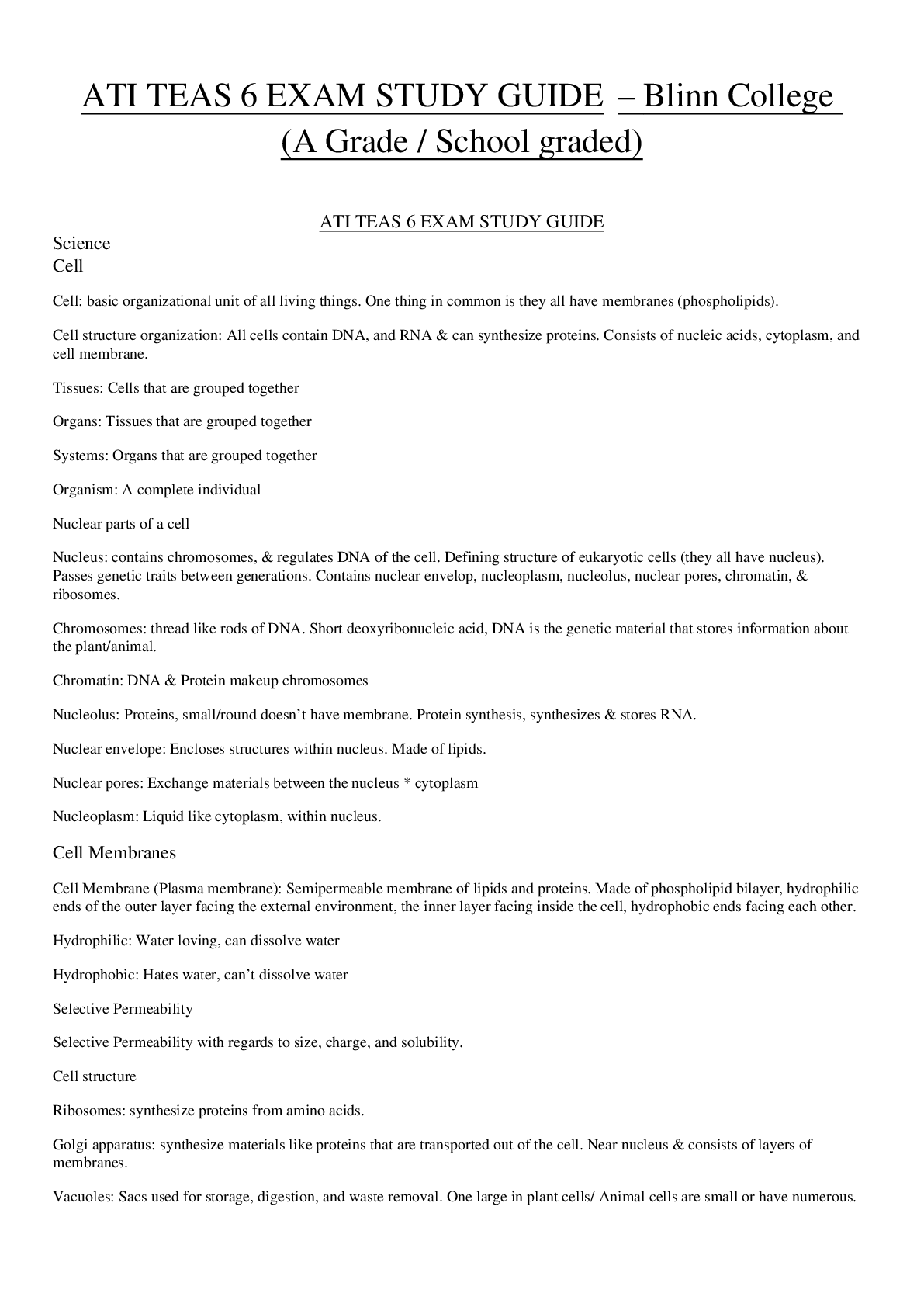
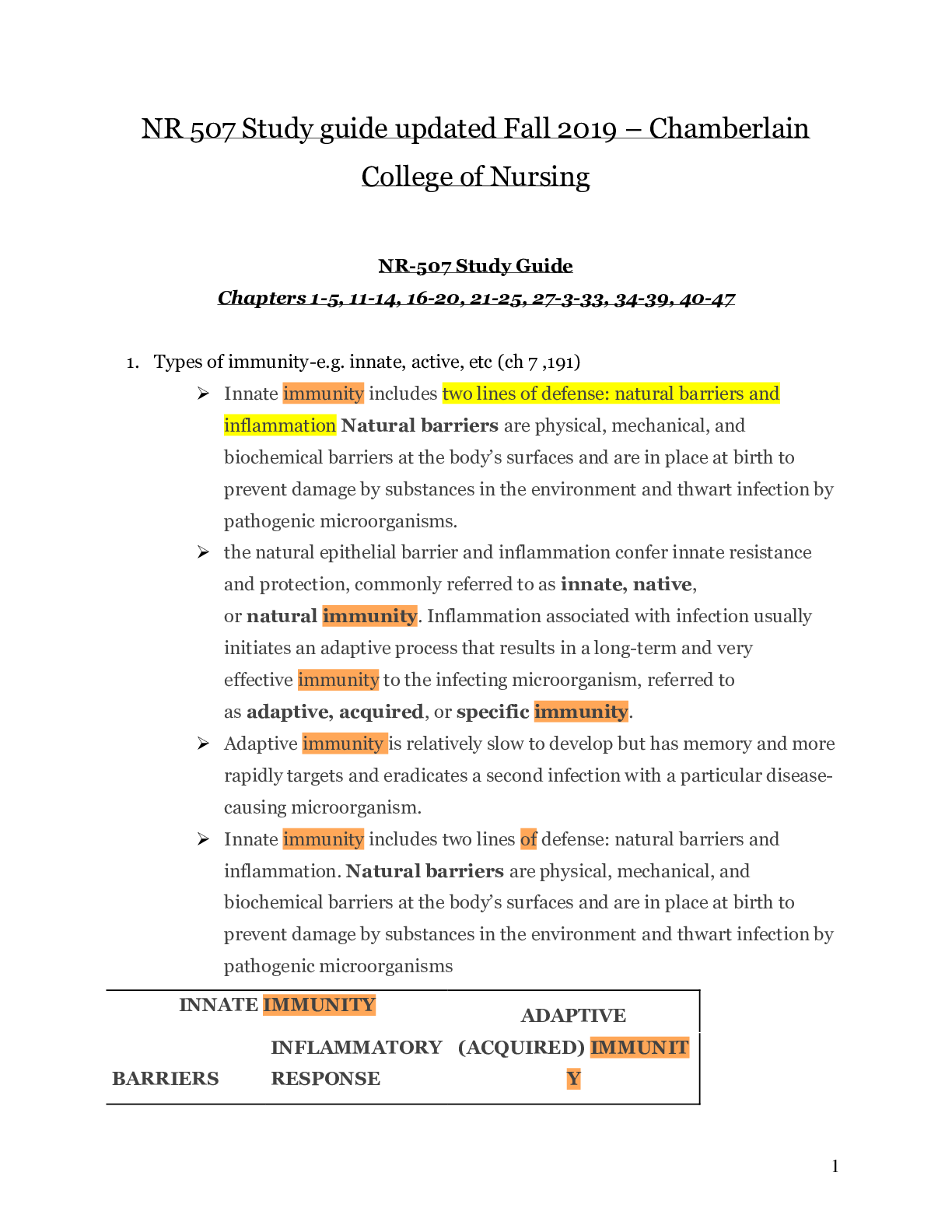
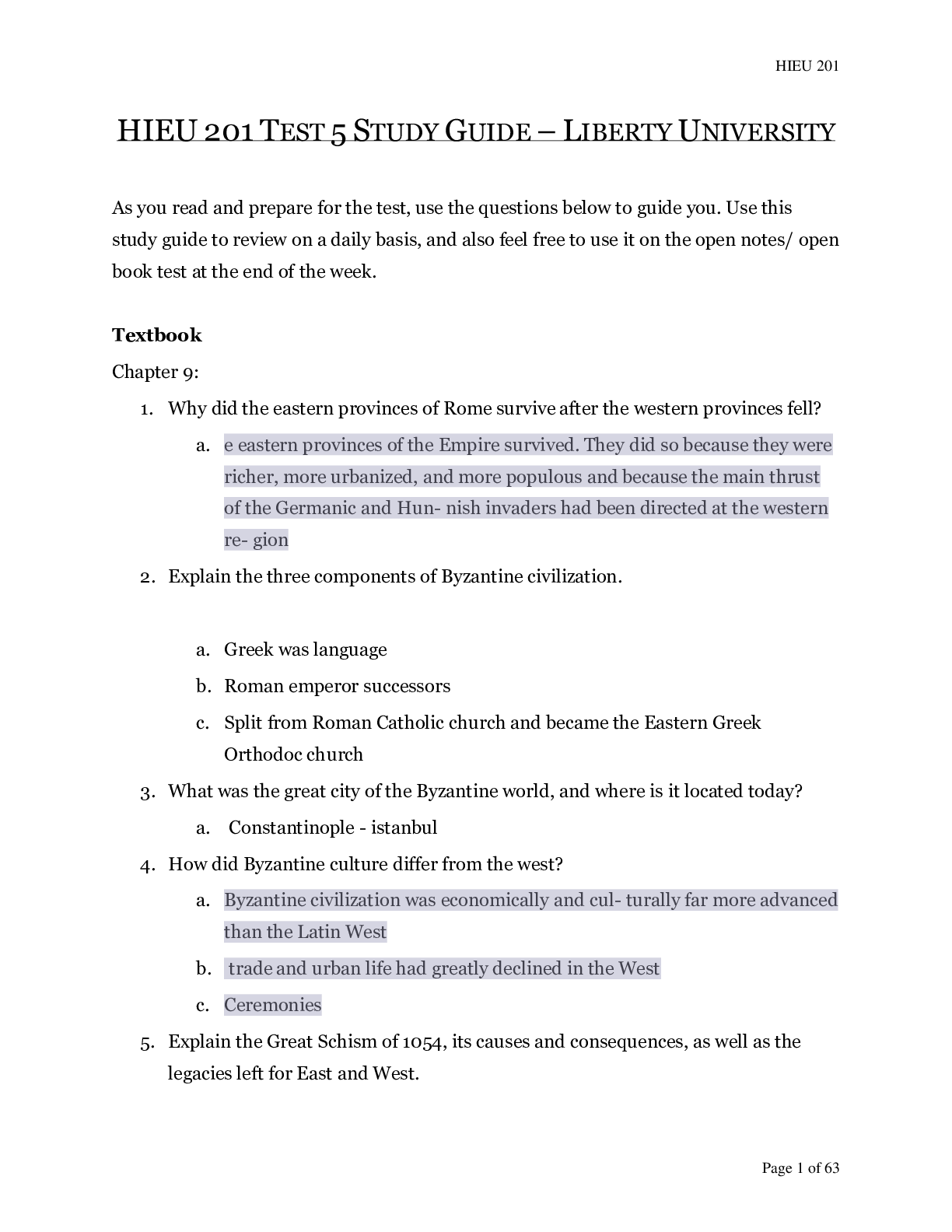
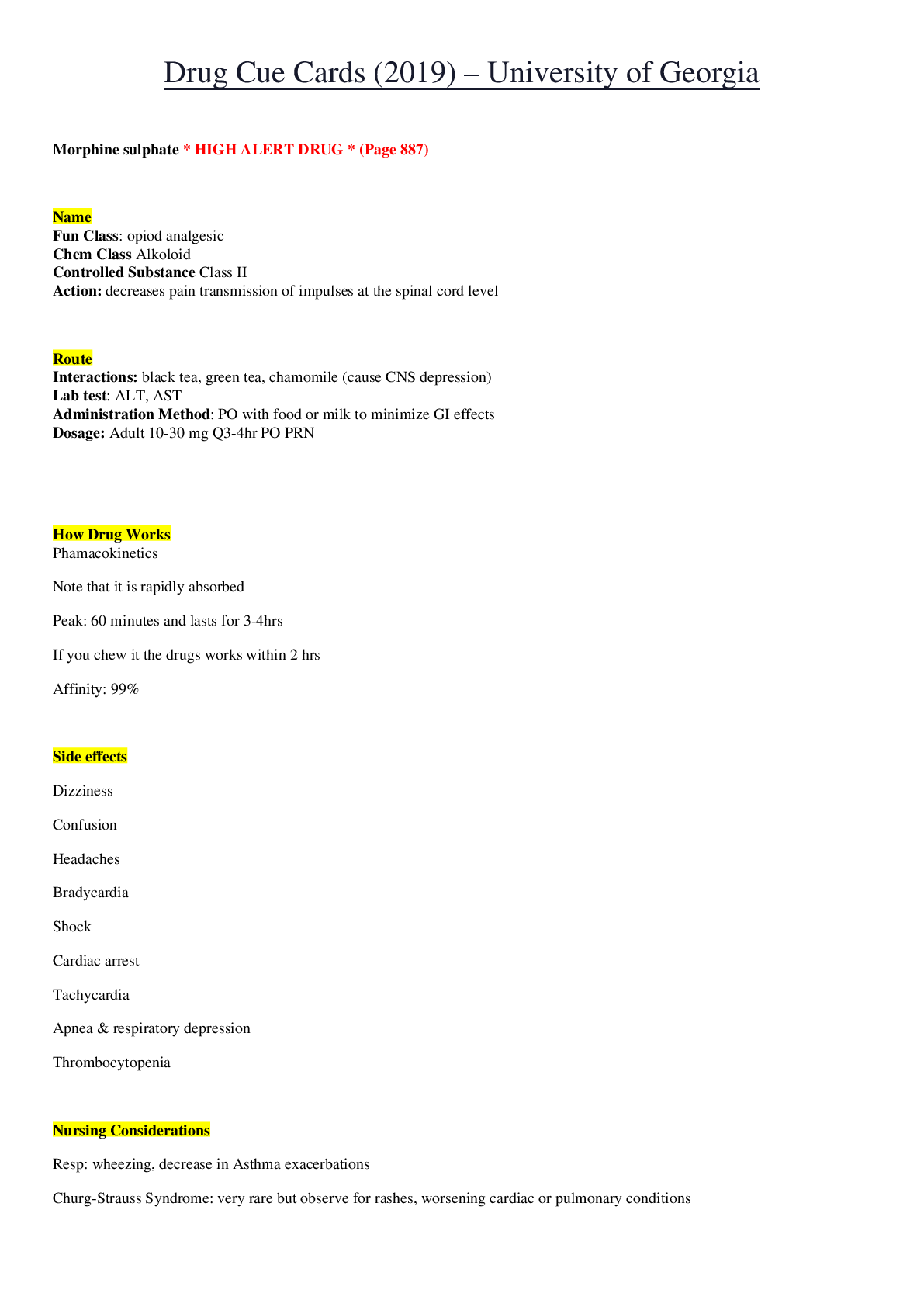
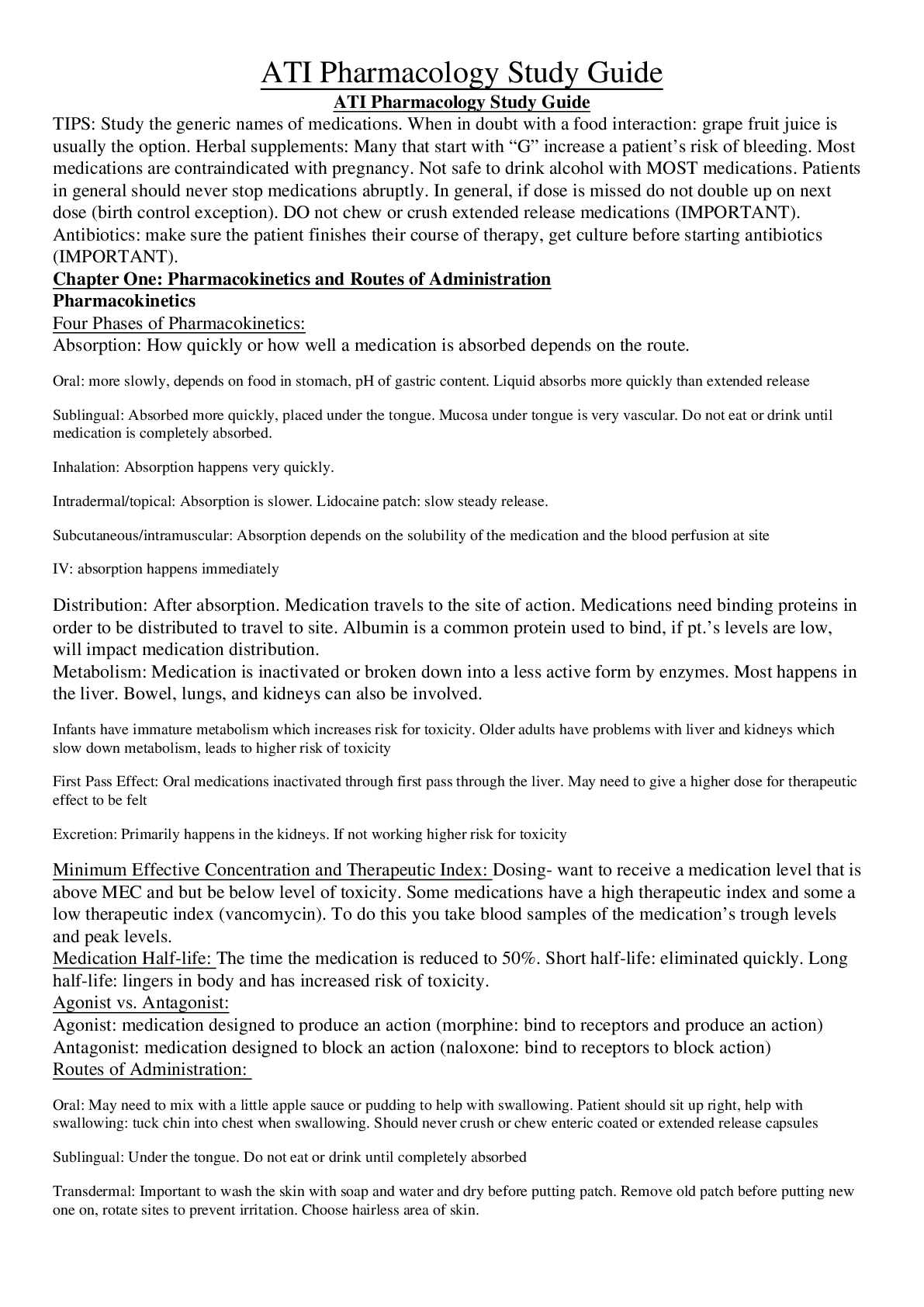
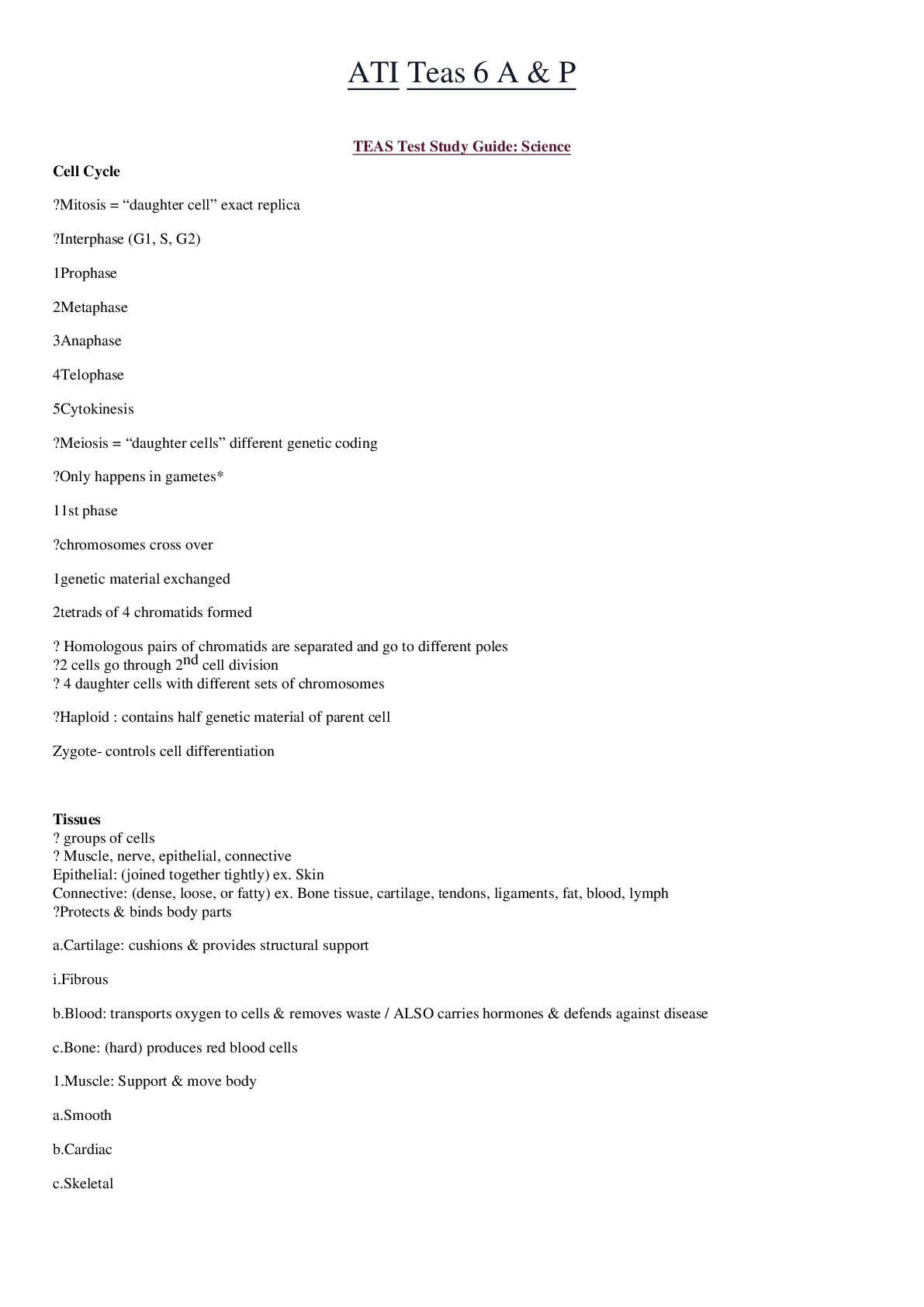
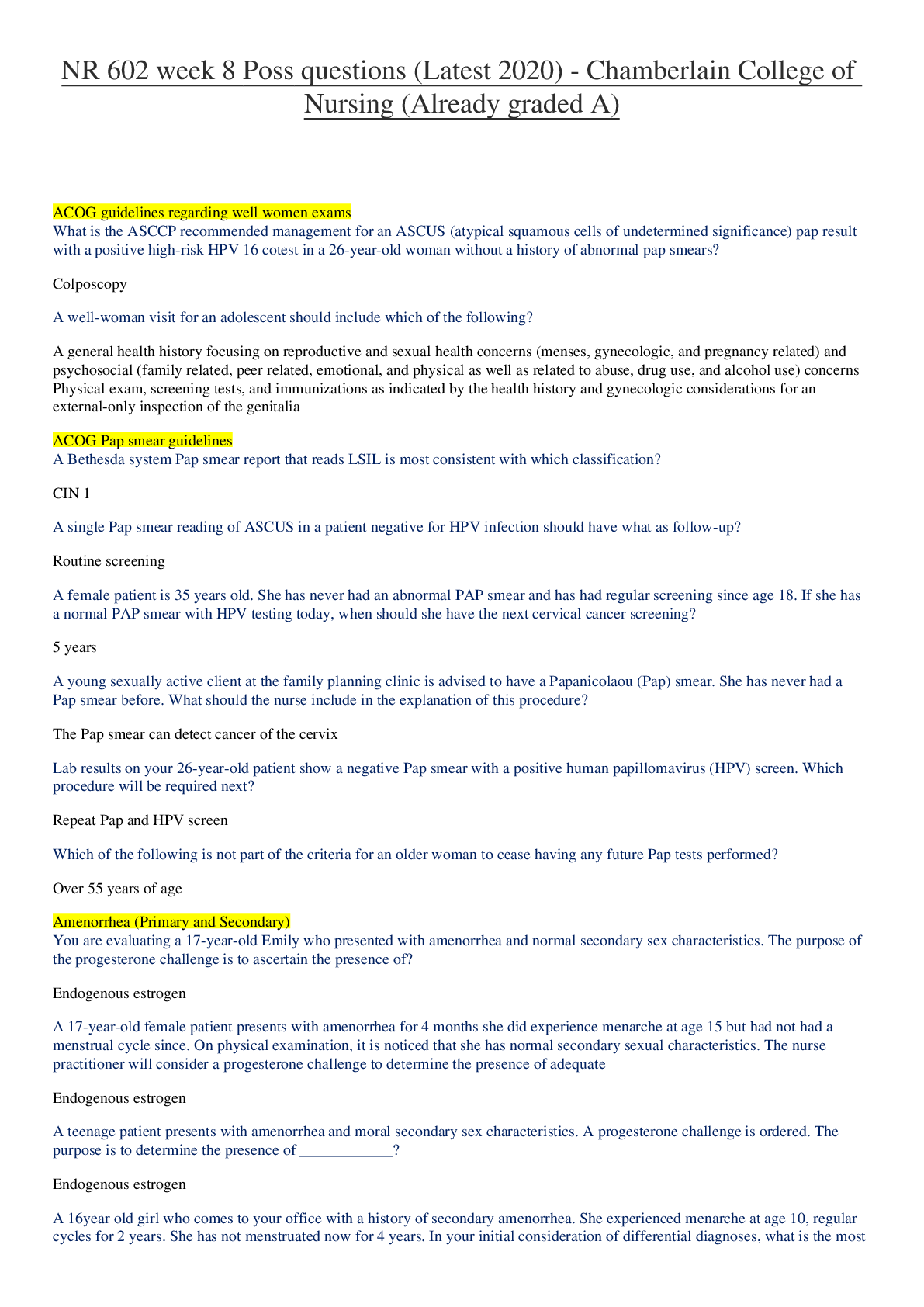
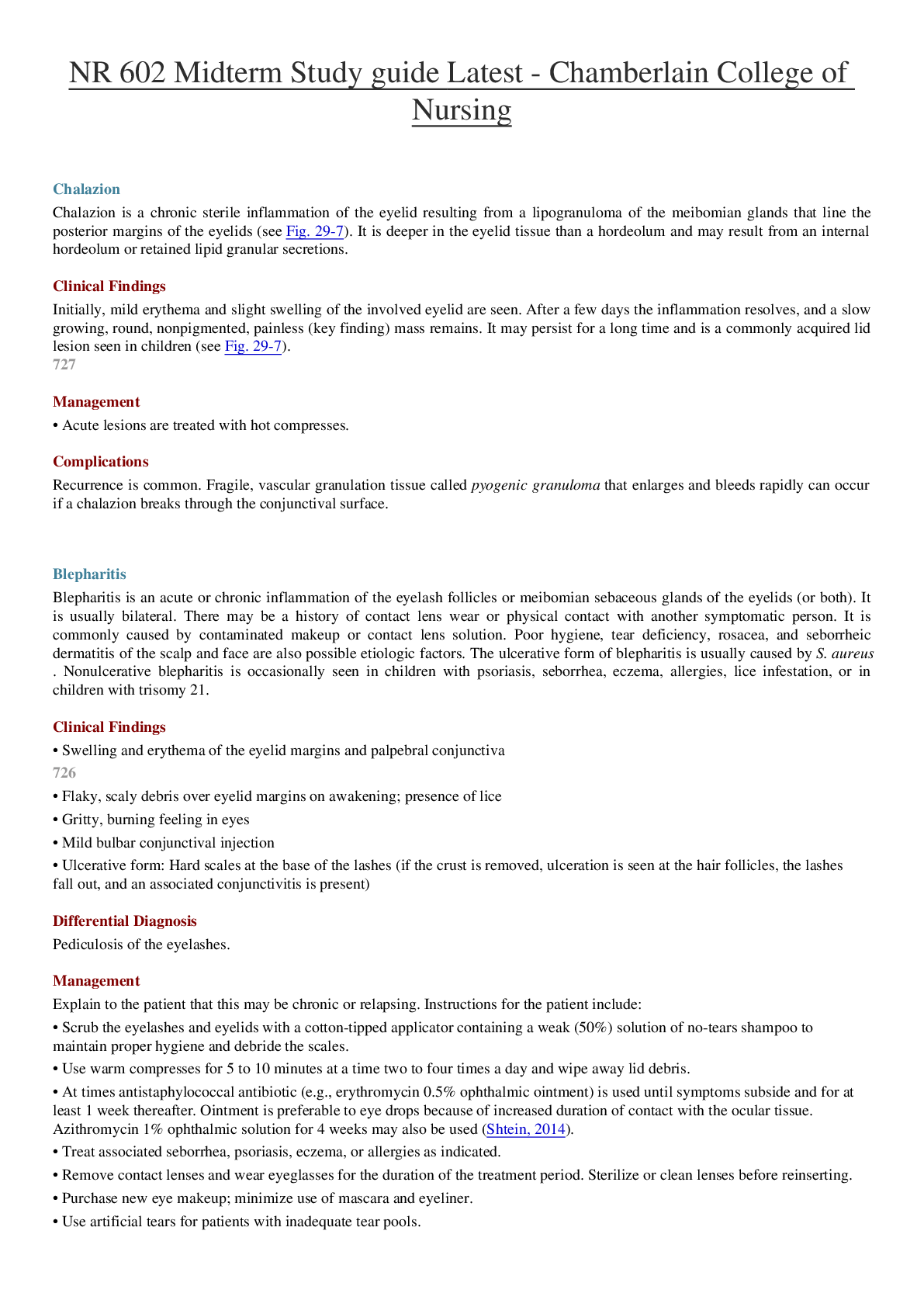
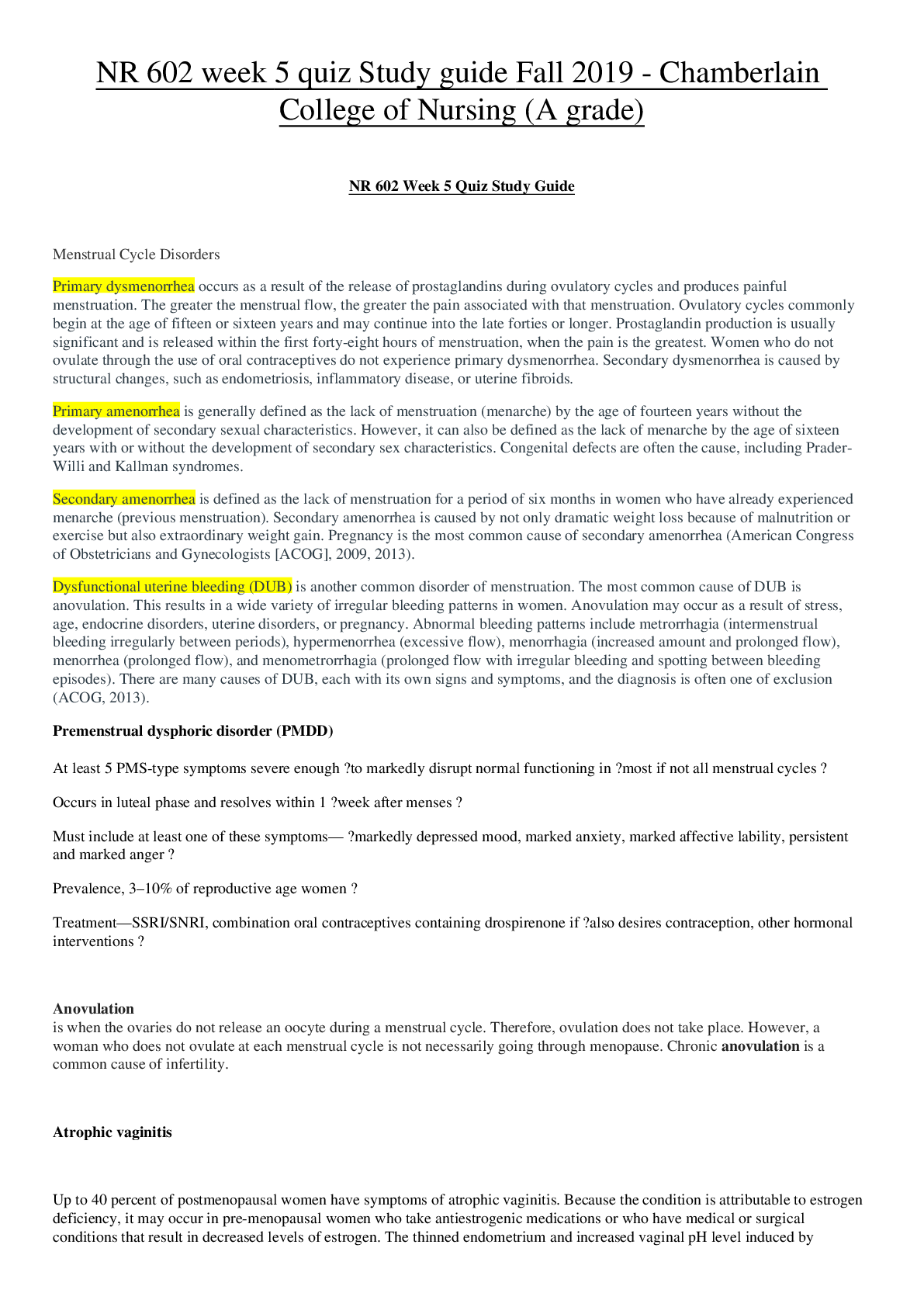
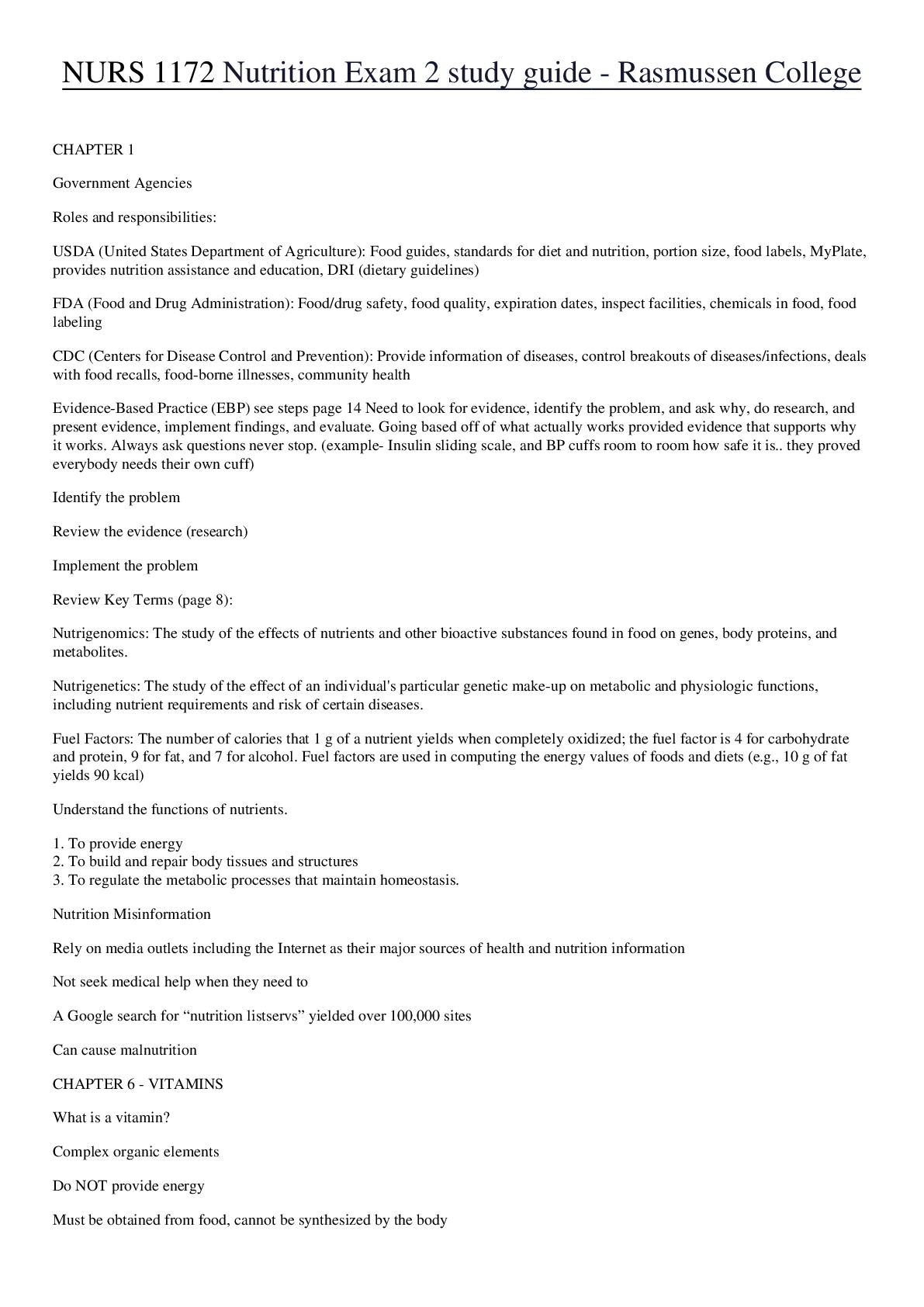
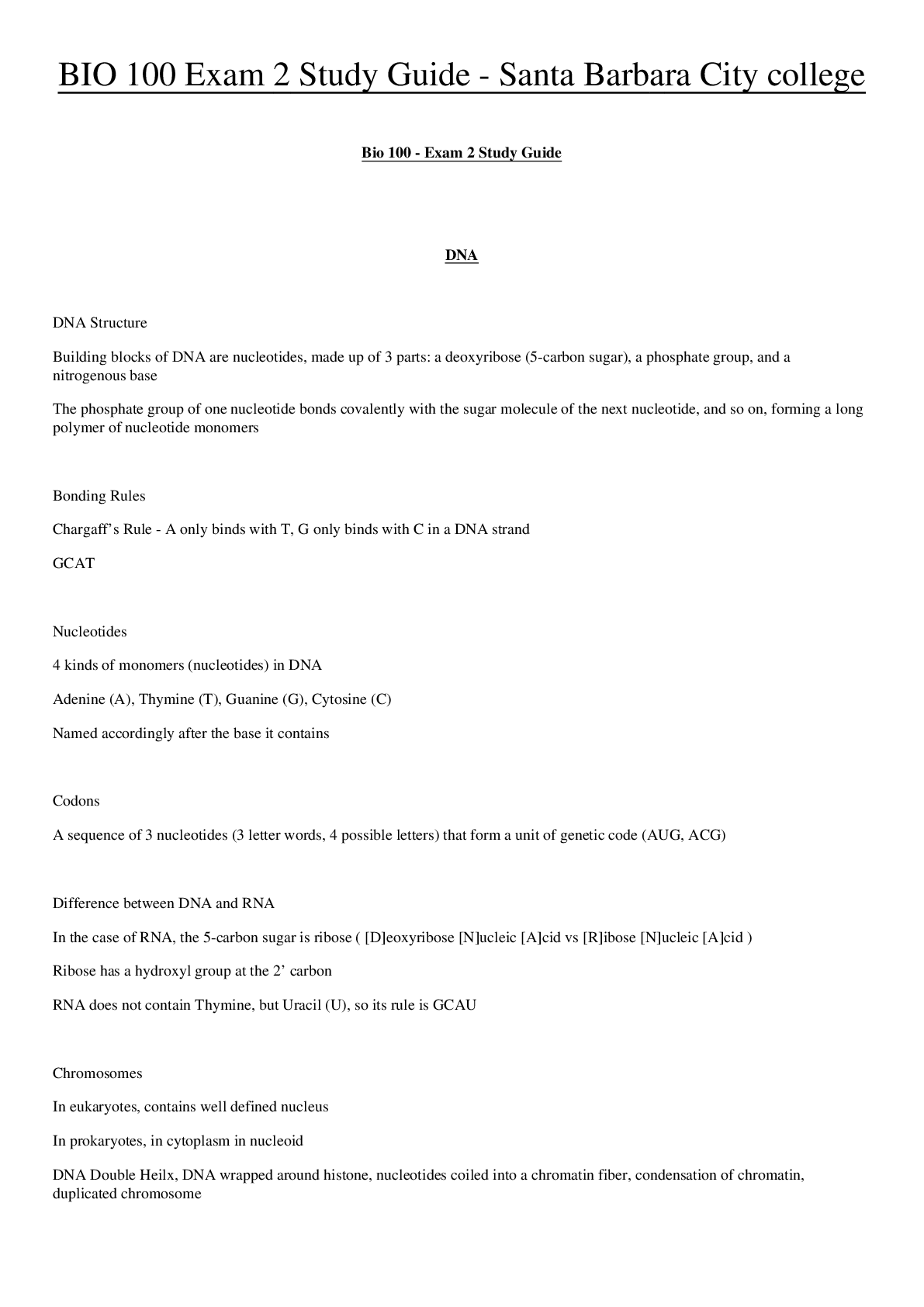
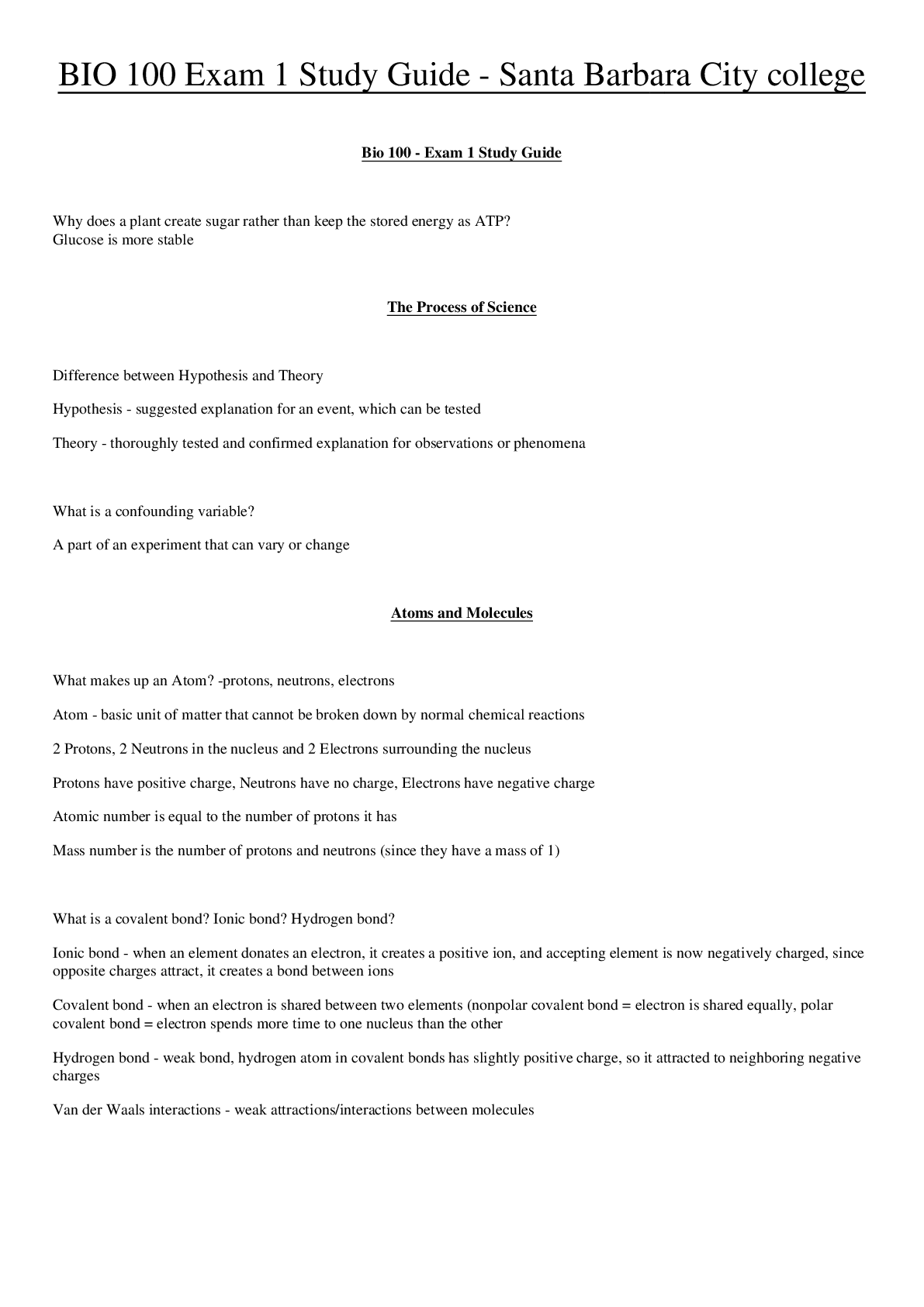
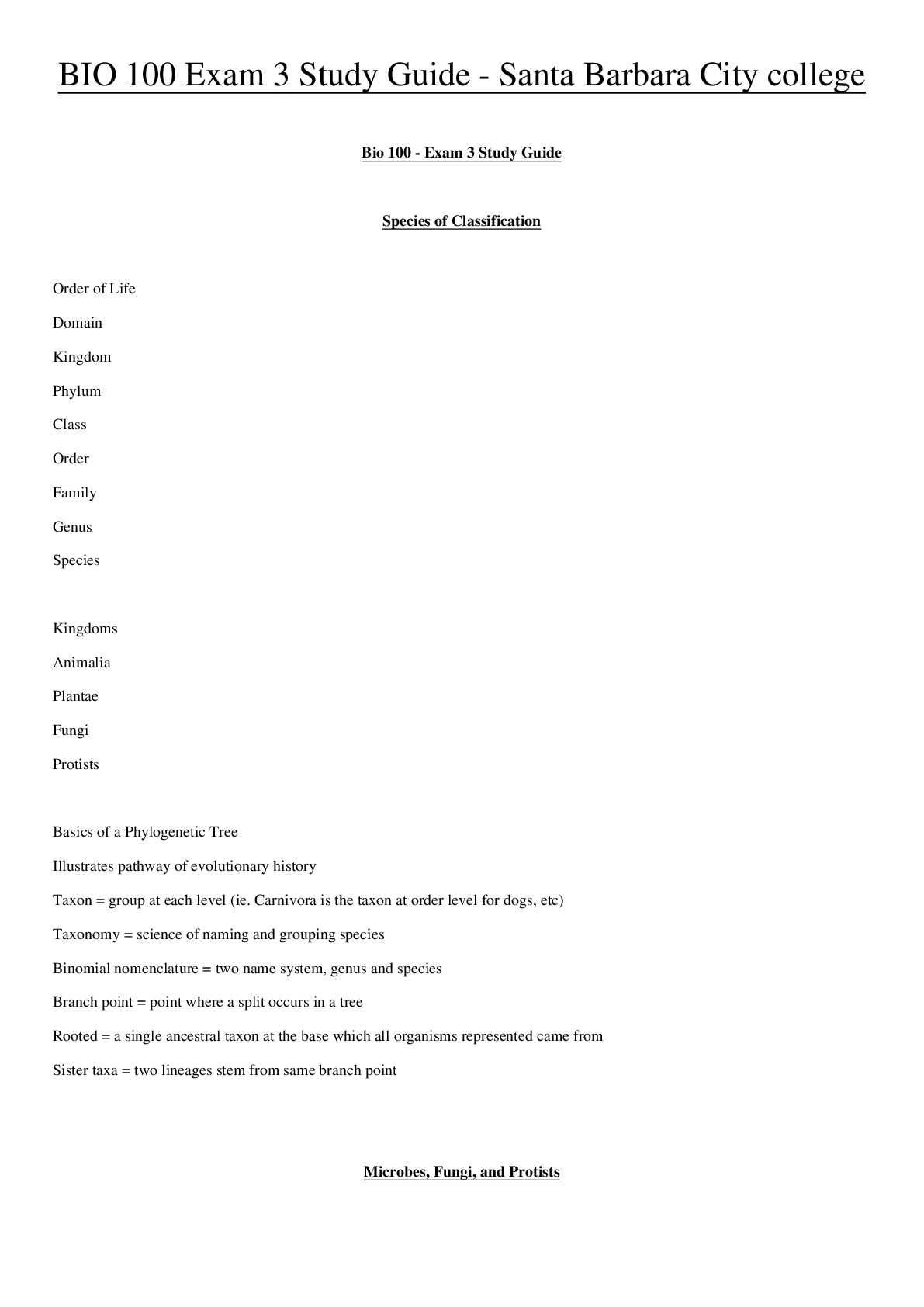
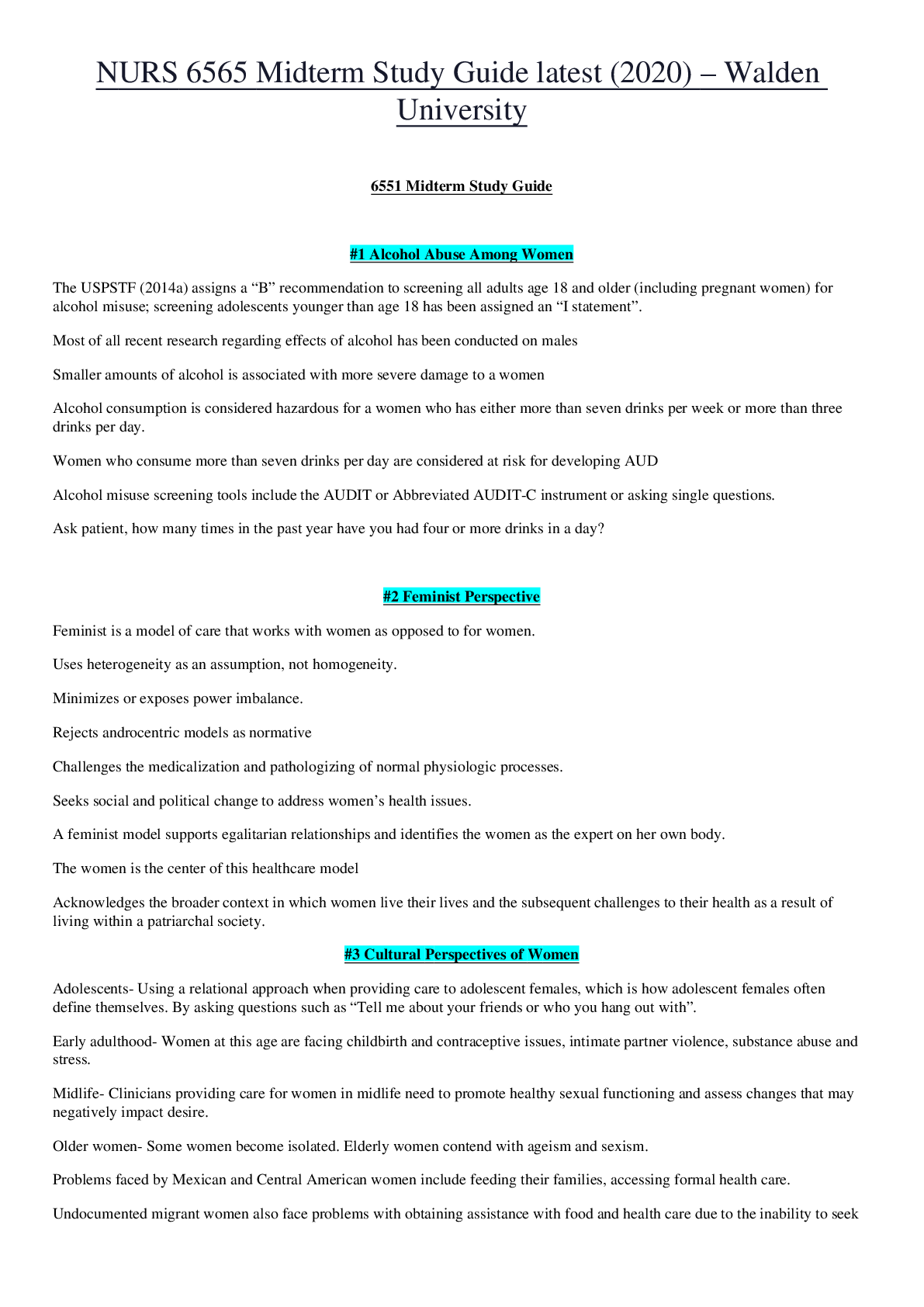

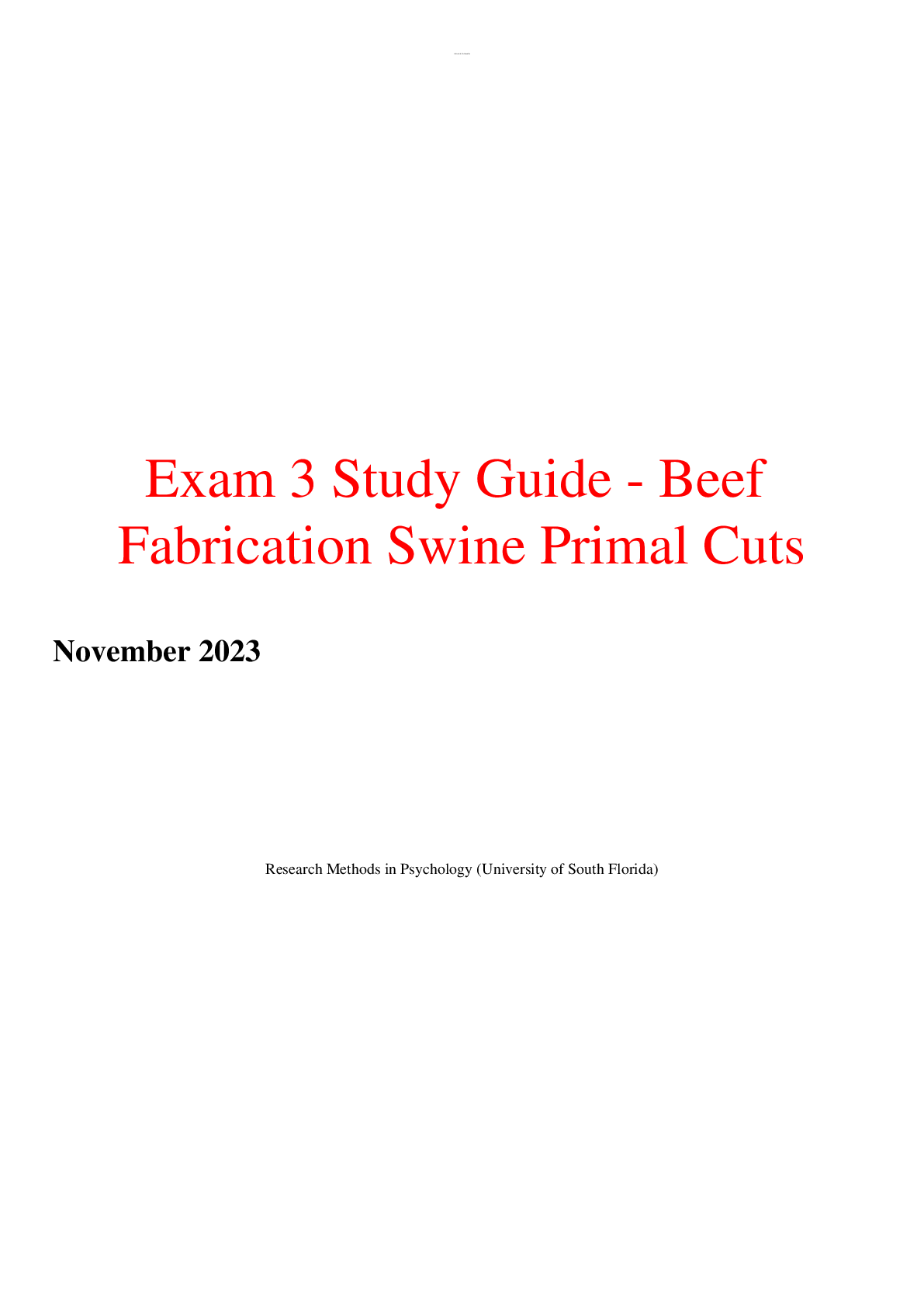
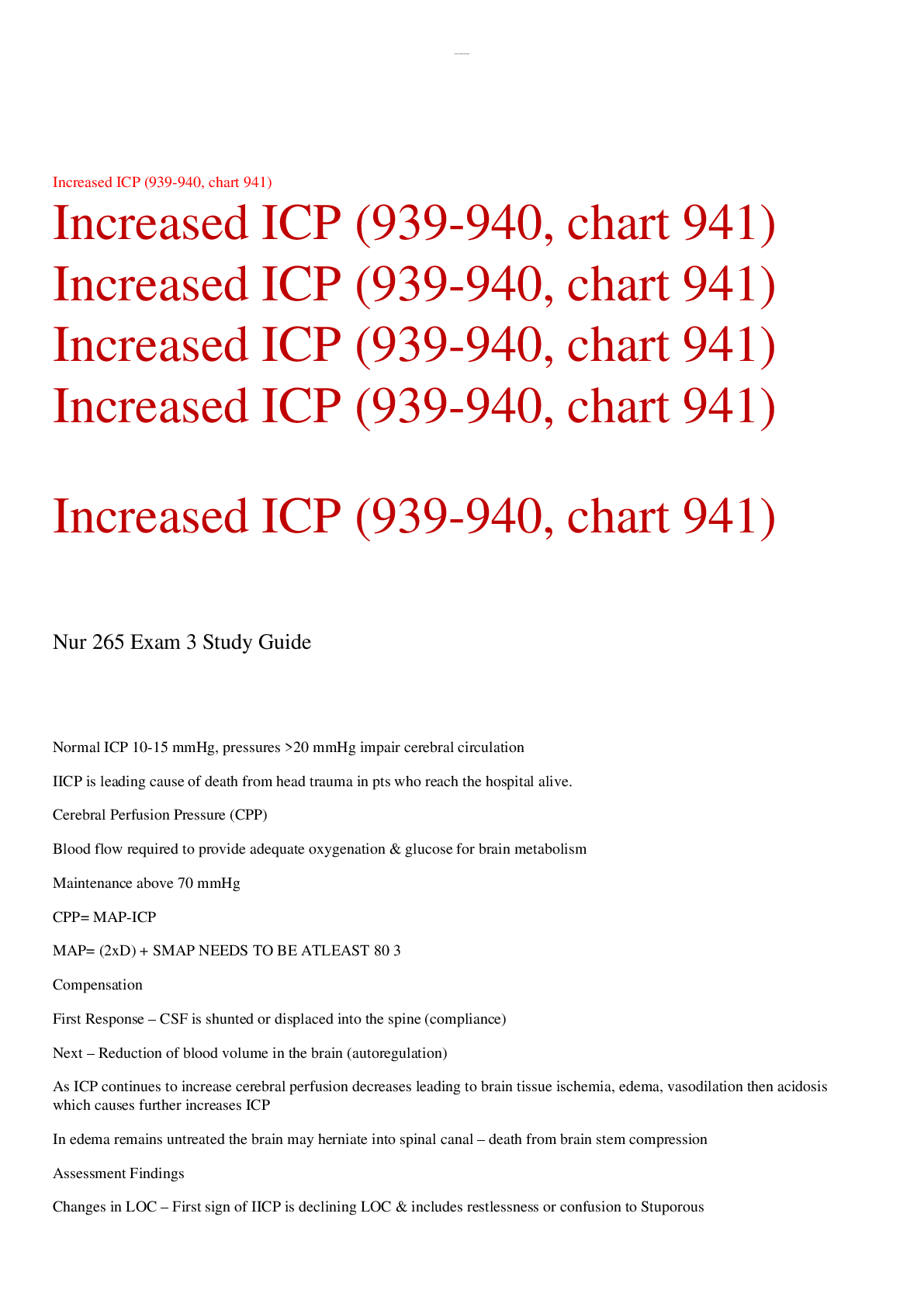
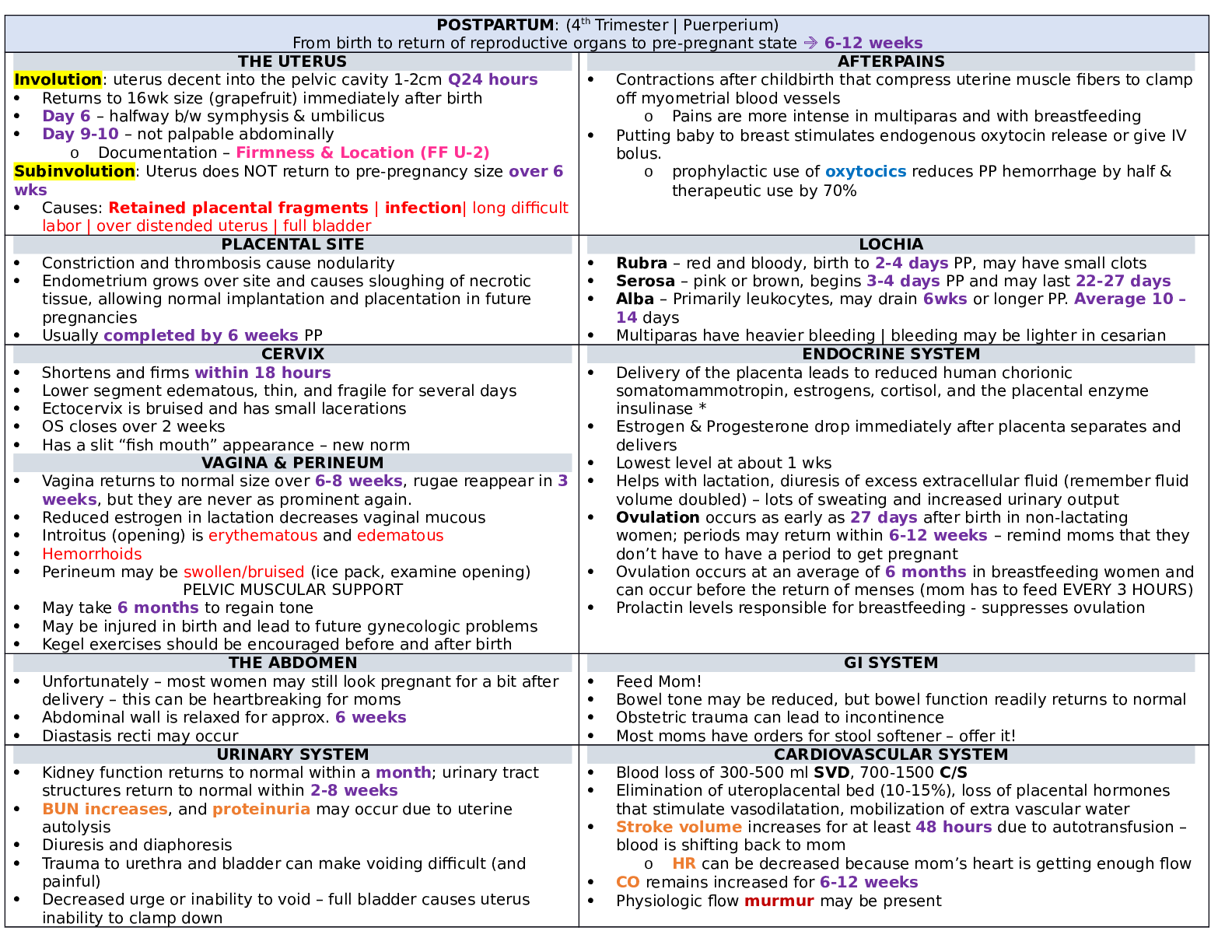
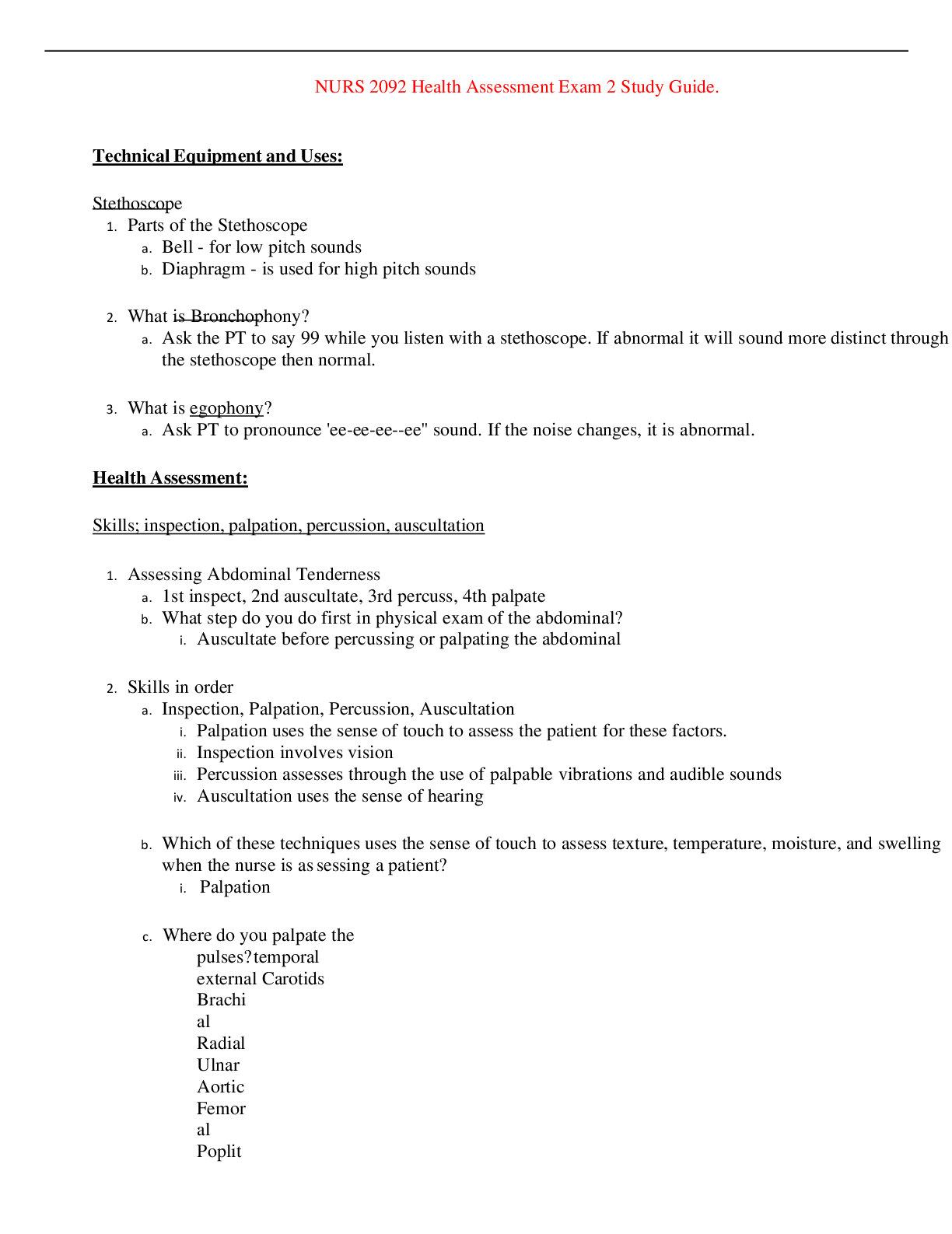
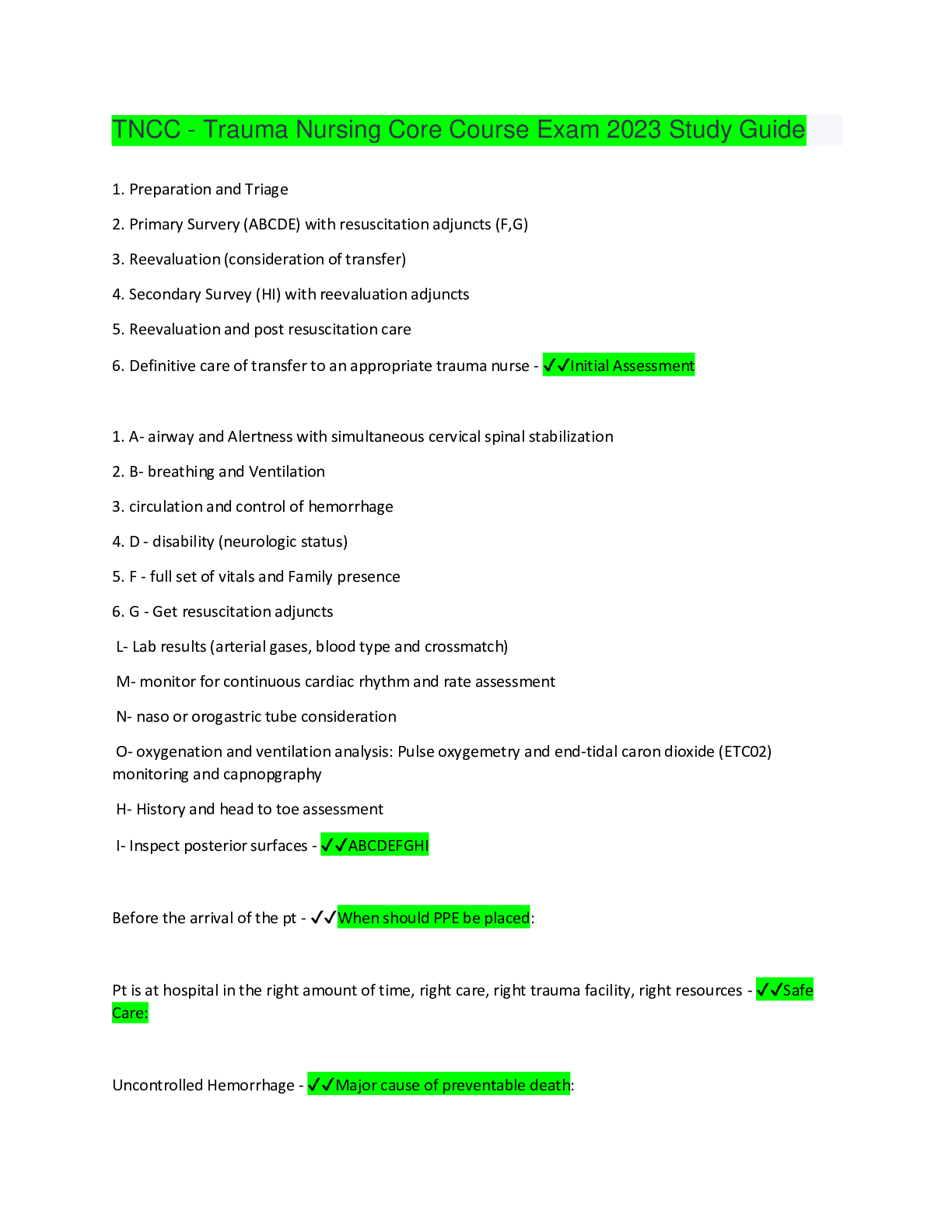
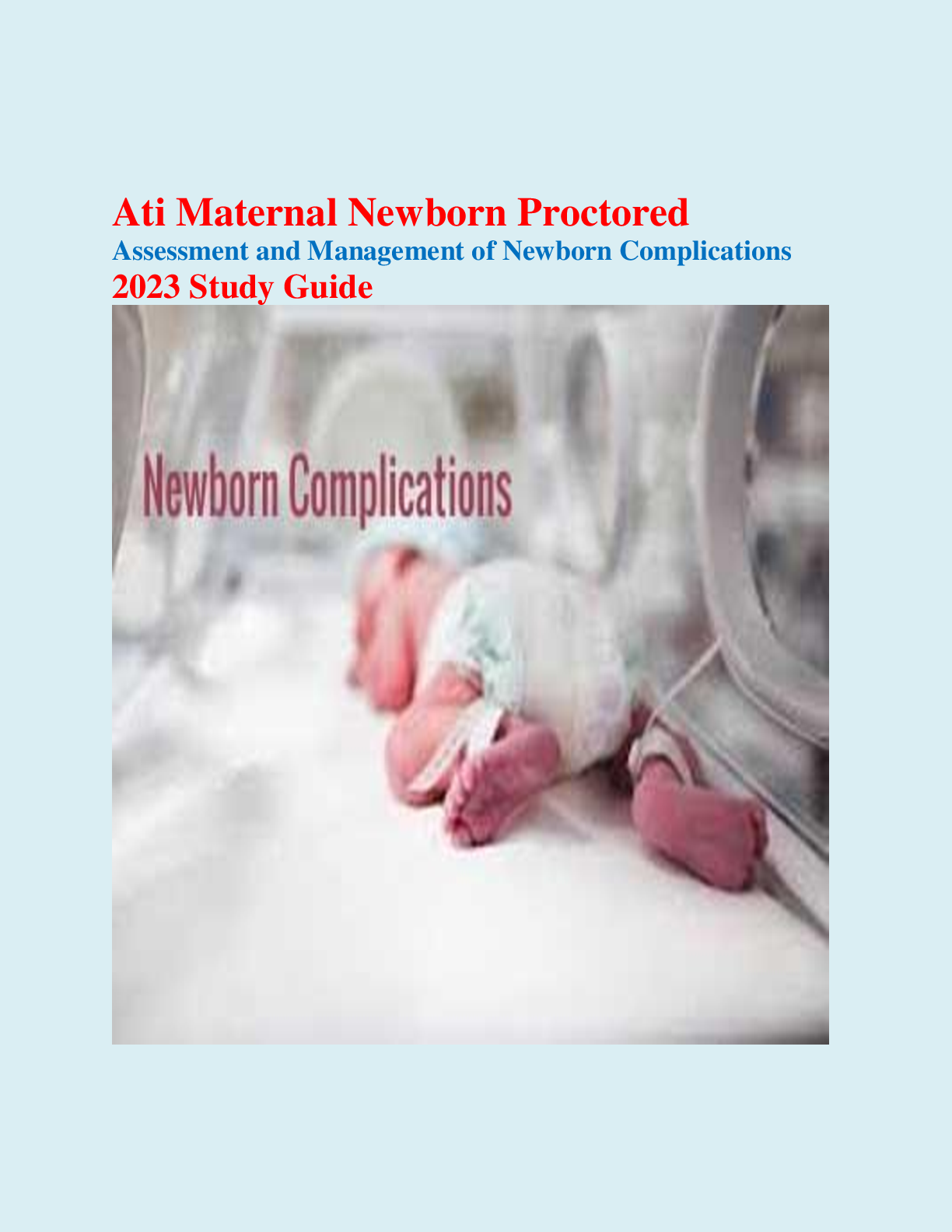
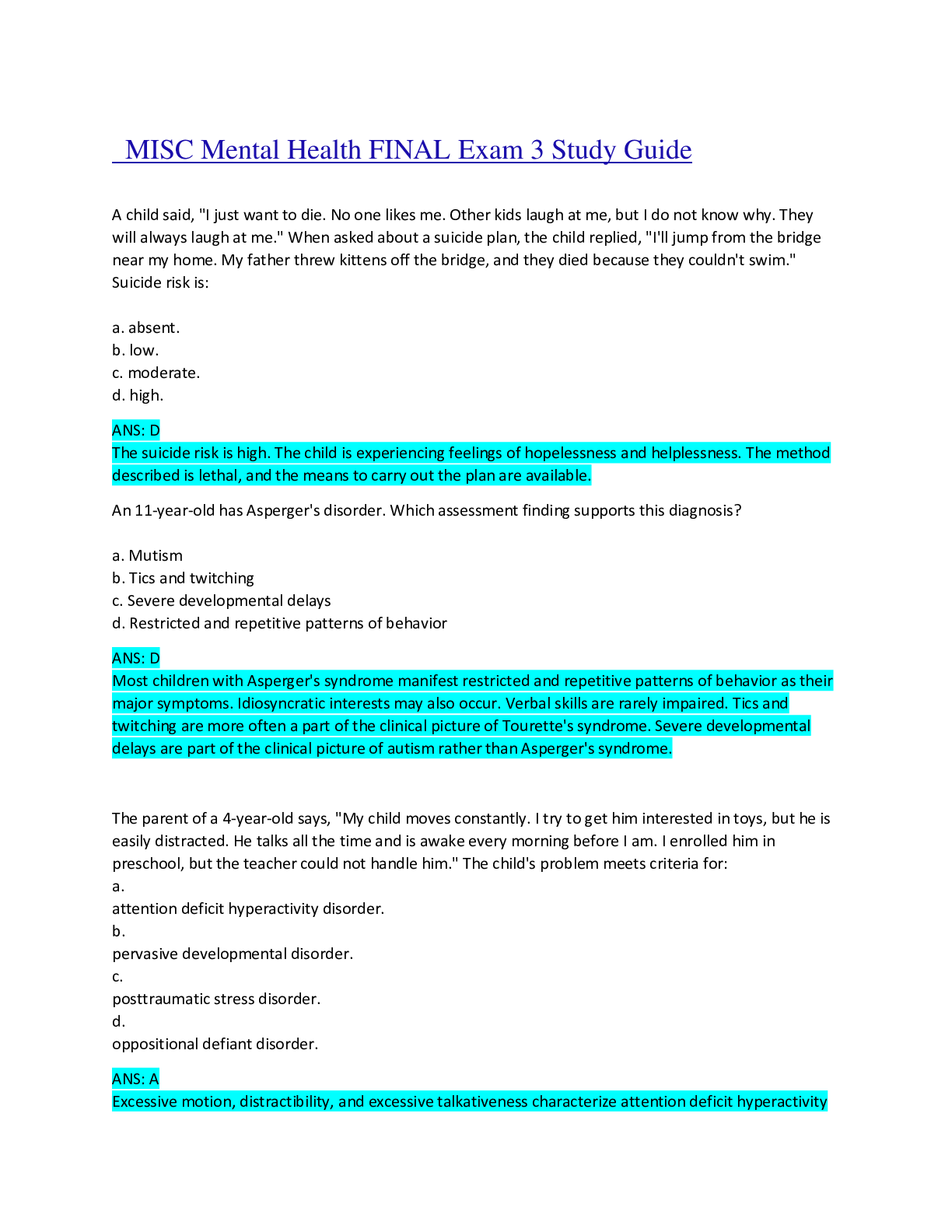

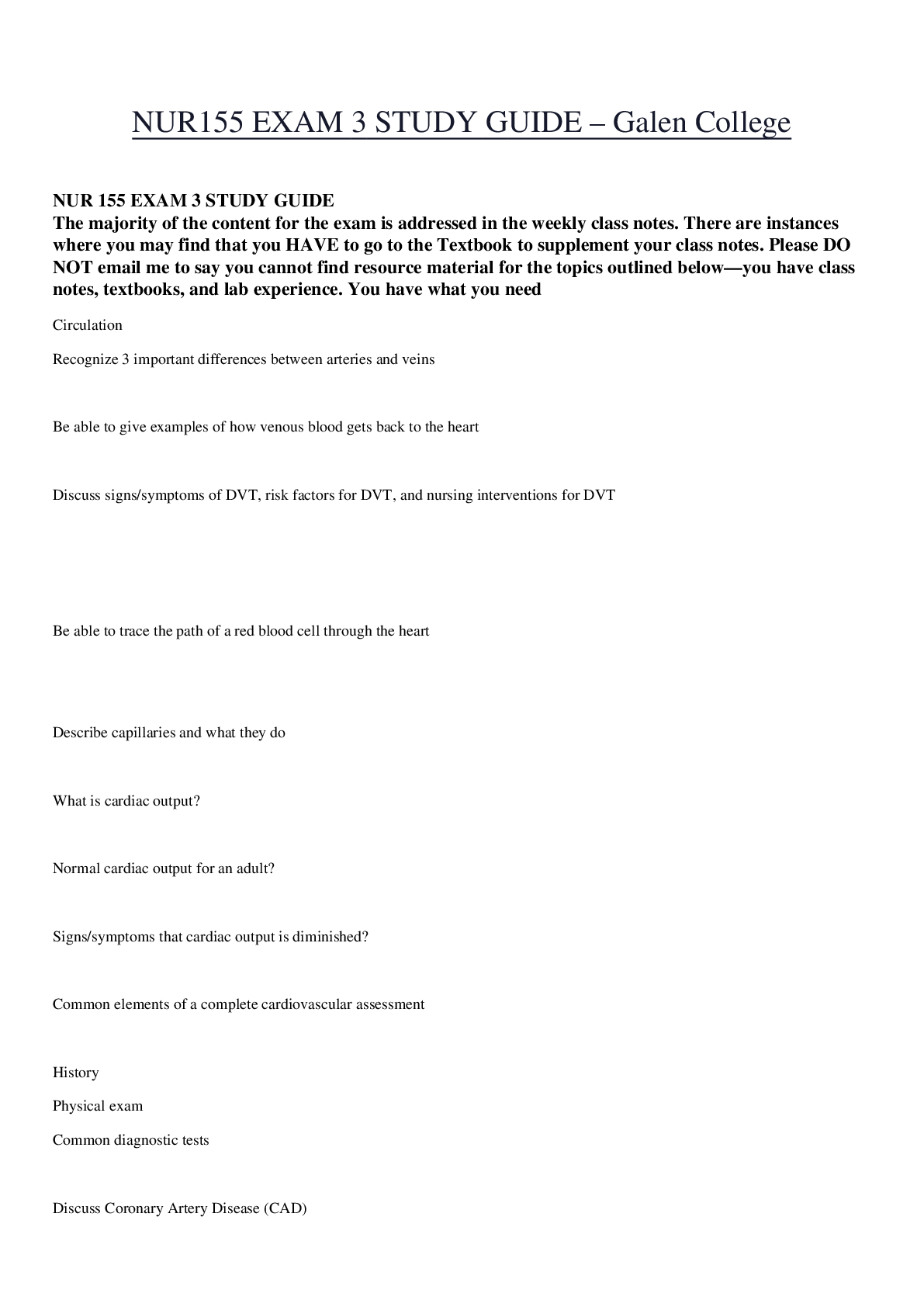
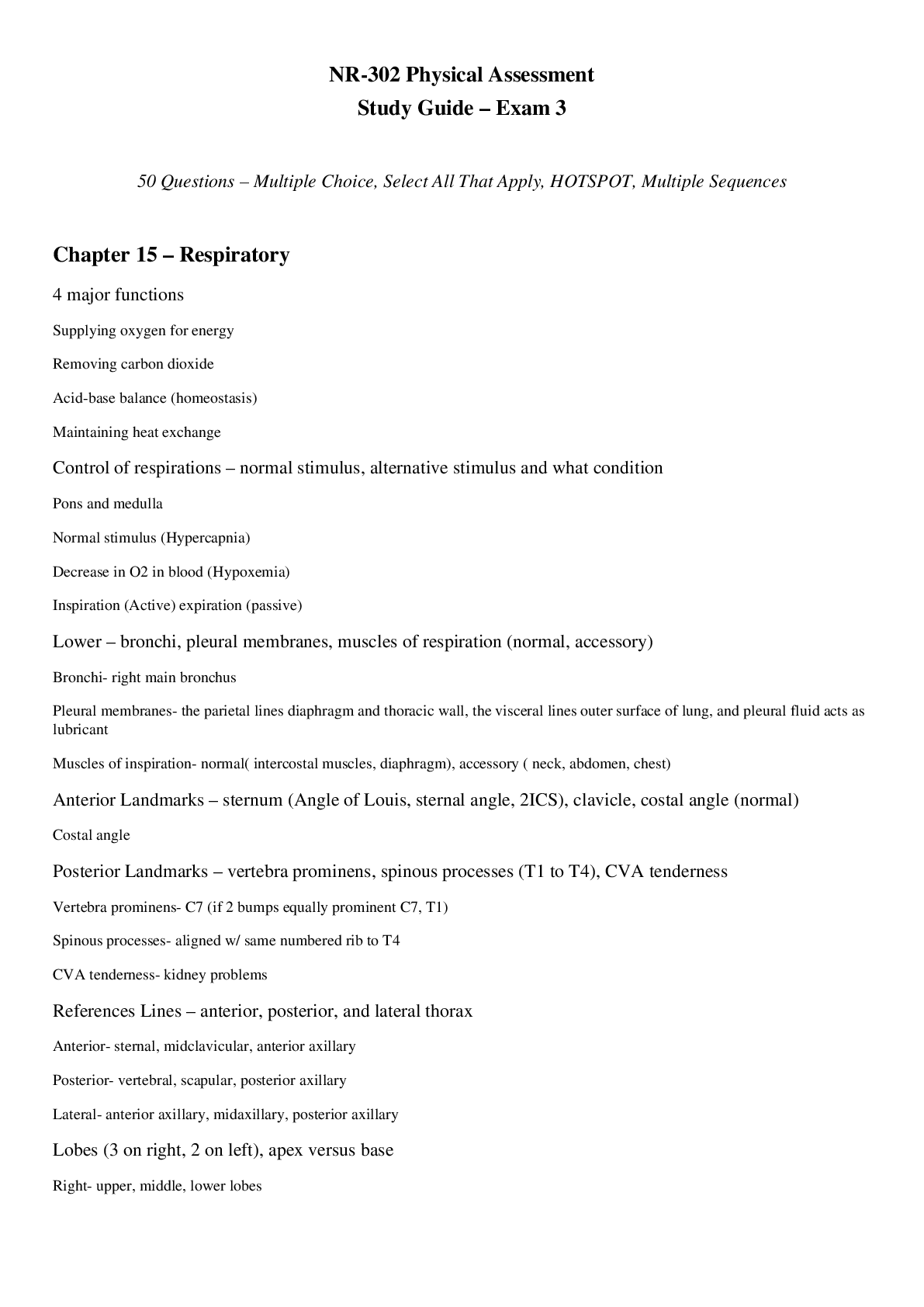
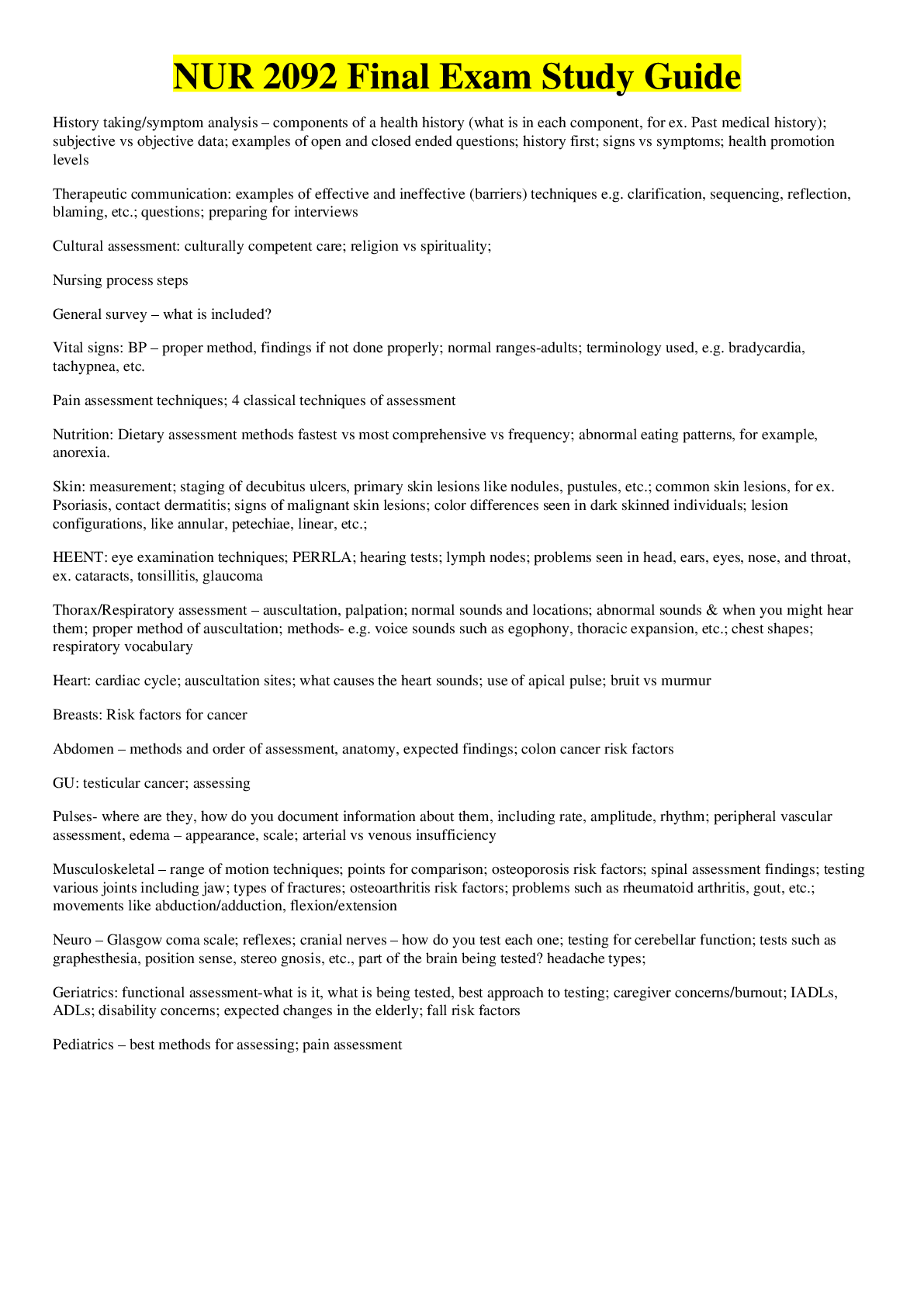
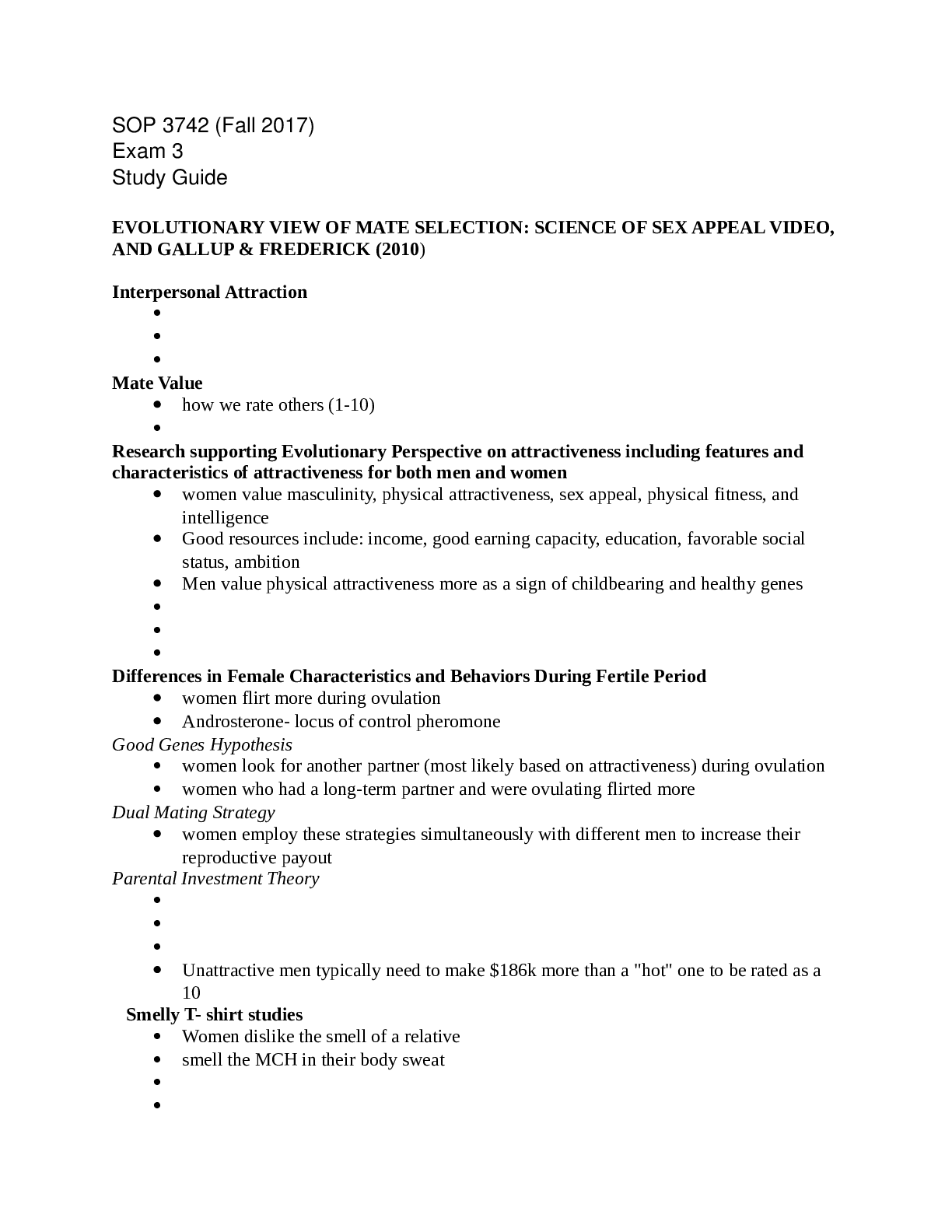
.png)

